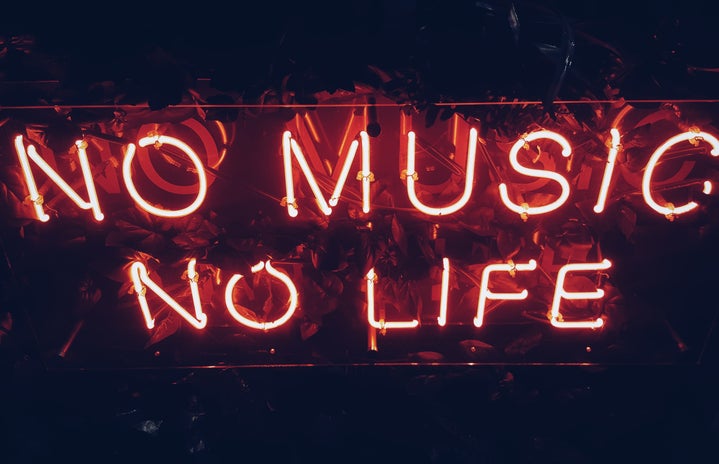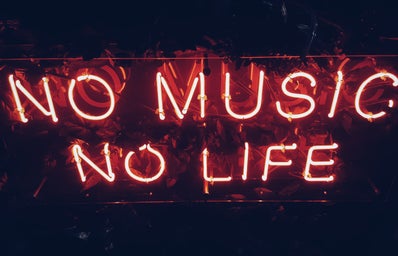Kendrick Lamar’s major-label albums play out like Spike Lee films in miniature. In both artists’ worlds, the stakes are unbearably high, the characters’ motives are unclear, and morality is knotty, but there is a central force you can feel steering every moment.
The “Good and Bad Hair” musical routine from Lee’s 1988 feature School Daze depicted black women grappling with colorism and exclusionary standards of American beauty. Mookie’s climactic window smash in 1989’s Do the Right Thing plunged its characters into fiery bedlam, quietly prophesying the coming L.A. riots in the process. In these moments, you could feel the director speaking to you directly through his characters and their trajectories. Lamar’s records, while crowded with conflicting ideas and arguing voices, have a similar sense of a guiding hand at work.
If good kid, m.A.A.d city was like a motion picture, then To Pimp a Butterfly is a novel, with rich interwoven references leaning toward a deep character study that runs throughout the narrative. And for that reason, it makes sense to look at it through such a lens.
To Pimp a Butterfly is what happened after Kendrick became the self-proclaimed “King of New York” and returned home. The analogy offered up in the record’s closing track “Mortal Man” is a caterpillar being imprisoned by its environment; cocooning itself in an internal struggle, and being released as a butterfly with a new outlook. In To Pimp a Butterfly we follow Kendrick through the poem, going through the conflict of his influence into depression and near self-destruction, before returning to the setting of his previous records: to be born again, a new man.
The music, meanwhile, follows a long line of genre-busting freakouts (The Roots’ Phrenology, Common’s Electric Circus, Q-Tip’s Kamaal the Abstract, André 3000’s The Love Below) in kicking at the confines of rap music presentation. There’s half a jazz band present at all times; pianist Robert Glasper, producer/sax player Terrace Martin, and bass wizard Thundercat give Butterfly a loose, fluid undertow every bit as tempestuous and unpredictable as the army of flows at Kendrick’s disposal.
Instead of telling you what is happening in a song, Kendrick speaks in metaphors that allude to each song’s situation. TPAB is an album that deals with materialism, racism, oppression, and above all else, self-love. The album’s title To Pimp a Butterfly, while a clever nod to Harper Lee’s To Kill a Mockingbird, is also a metaphor for the literal pimping of something as beautiful/free as a butterfly. I and many other hip-hop heads have interpreted this as the pimping or exploitation of black people/culture by the hands of the United States. The topics and themes that TPAB dealt with were a lot to take in when I first listened to it as a thirteen-year-old but as I’ve gotten older and re-listened to the album multiple times, the story becomes clearer and clearer.
While I would love to go into a full track-by-track analysis of TPAB’s story, for the interest of time I feel it’d be best to give a slight TL:DR version. For clarification, here is a poem Kendrick delivers on the final track “Mortal Man”, which essentially sums up the album.
“The caterpillar is a prisoner to the streets that conceived it. Its only job is to eat or consume everything around it in order to protect itself from this mad city. While consuming its environment, the caterpillar begins to notice ways to survive. One thing it notices is how much the world shuns him but praises the butterfly. The butterfly represents the talent, the thoughtfulness, and the beauty within the caterpillar. But having a harsh outlook on life, the caterpillar sees the butterfly as weak and figures out a way to pimp it to its own benefits. Already surrounded by this mad city, the caterpillar goes to work on the cocoon which institutionalizes him. He can no longer see past his own thoughts; he’s trapped. While trapped inside these walls, certain ideas take root, such as going home and bringing new concepts to this mad city. The result? Wings begin to emerge, breaking the cycle of feeling stagnant. Finally free, the butterfly sheds light on situations that the caterpillar never considered, ending the eternal struggle. Although the caterpillar and the butterfly are completely different, they are one in the same.”
Kendrick speaks very metaphorically in this excerpt, but here are three things to consider: the caterpillar, the butterfly, and the cocoon. The caterpillar is Kendrick Lamar who is a prisoner to the streets of Compton, consuming what his environment feeds him. The butterfly is the hidden talent within the caterpillar, who has raised himself above the trappings of the caterpillar’s environment. In this case, the Kendrick Lamar we know of today. The cocoon is a metaphor for the various elements that keep the caterpillar trapped in its environment, fooling it into thinking that it can be satisfied when in reality it stops the caterpillar from transforming into a butterfly. These can be things such as materialism, racism, imprisonment, etc.
The first three tracks (“Wesley’s Theory”, “For Free?”, and “King Kunta”) detail how the caterpillar becomes enticed by the riches and wealth offered by capitalist America and “Lucy” or Lucifer. The caterpillar indulges in everything it has to offer, but the harsh reality is that it is merely becoming another cog in the system for America to pimp. While Kendrick may feel like he is on top of the world as he professes on “King Kunta”, he is still a slave to the environment as he sacrifices his liberty for all the money and fame. What happens now is that the caterpillar starts building its cocoon.
The next five songs (“Institutionalized”, “These Walls”, “U”, “Alright” and “For Sale?”) describe how the caterpillar becomes stuck inside this cocoon. On “Institutionalized”, Kendrick begins to enter this cocoon as he raps: (“I’m trapped inside the ghetto, and I ain’t too proud to admit it”.). “These Walls”, the walls of the cocoon begin closing in on Kendrick. From my understanding, these walls act as a metaphor for the following subjects: lust (verse 1), politics (verse 2), and vengeance (verse 3). These walls blind the caterpillar from seeing its true potential and thus they throw him into a downward spiral that drives him into a deep depression on “U”.
Being trapped inside the cocoon has made the caterpillar doubtful about the successes he’s achieved. While he is busy reaping the benefits, the people around the caterpillar suffer (family, friends, etc.) as Kendrick drunkenly weeps that his “trials and tribulations are a burden on everyone else.” Things take a brighter turn on “Alright” however, with a fresh perspective the caterpillar finds a way to escape his troubles. Being trapped inside the cocoon has bred new ideas in the caterpillar, such as putting his faith in God and fighting the temptations of “Lucy” on the next track “For Sale?”.
With “Momma” and “Hood Politics,” Kendrick returns home with this new mindset to tell the stories of his personal growth while being trapped inside the cocoon. Putting himself in the shoes of his newly found perspective on life, and his past outlook on the two songs respectively. While on this journey, Kendrick stumbles upon a homeless man begging for a dollar on “How Much a Dollar Really Cost.” Kendrick refuses to give the man any money, thinking he is a crack addict who will use it to fuel his habit. However, Kendrick’s selfishness costs him a spot in heaven, as it is revealed that the man was actually God, who was testing Kendrick’s faith. Asking for forgiveness, Kendrick realizes his lack of humility, accepts his wrongs, and begins his true path to redemption, becoming the butterfly.
On “Complexion” alongside Rapsody, Kendrick begins “breaking the cycle of feeling stagnant” by first attacking the issue of colorism within the black community. Slowly we start to see the caterpillar’s wings grow as he begins to break out of the cocoon. Next in “The Blacker the Berry,” Kendrick criticizes the racialized self-hatred brought on by America/Lucy that pimped him, and perhaps many other caterpillars before him. He calls these other caterpillars hypocrites as we hear him say in the track’s final verse: (“Why did I weep when Trayvon Martin was in the street when gang banging make me kill a n**** blacker than me?”). The environment creates the mindset of gang banging and killing each other within the community, yet they weep and protest at the sight of white-on-black violence.
Kendrick (now more consciously aware) aims to break this tradition created by their environment. The full transformation from caterpillar to butterfly takes place in the next track “You Ain’t Gotta Lie.” He tells the listeners that they don’t have to lie to themselves to earn respect. The caterpillar doesn’t need to lie about money and power being the only ways to succeed. The caterpillar has broken out of the cocoon, he has finally become the butterfly.
Now seeing the world around him in a new light, the butterfly wants to spread his message of self-love. Kendrick rightfully does so on “I,” free from the environment he once endured as a caterpillar, the butterfly preaches to his community to love one’s self for who one truly is, regardless of how others think of them. Halfway through the song, a fight interrupts forcing Kendrick to remind his audience that they must unite together. TPAB ends with the aforementioned “Mortal Man.” Here, Kendrick has a one-on-one conversation with the legendary Tupac Shakur, telling him of his journey from caterpillar, to cocoon, to butterfly. Tupac reminds Kendrick about the responsibility he has towards the young people of today, to inspire them to change the world, so they too can be as free as a butterfly, just like him.
Even though we may become institutionalized and trapped by our environments or countries or by the hands of evil, we can break free; free ourselves from the cocoon that tries to stop us from growing intellectually. Once liberated, we can learn to teach and respect others and learn to love ourselves for who we really are. Underneath the tragedy and adversity, To Pimp a Butterfly is a celebration of the audacity to wake up each morning trying to be better, knowing it could all end in a second, for no reason at all.


